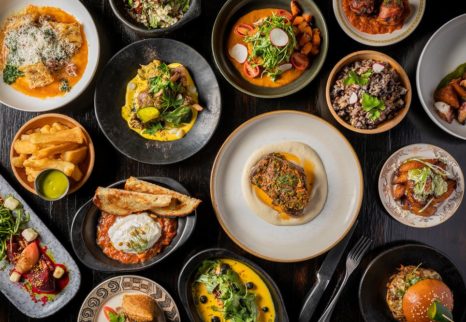为了庆祝去年的拉丁传统月,Yelp宣布了拉丁人拥有的商业属性,并与Momento Latino合作,帮助人们在全国各地的当地社区支持拉丁人企业家。自2020年推出以来,有超过2.4万家企业在Yelp上自称为拉丁人所有,这使得消费者比以往任何时候都更容易找到……阅读更多

这是旧金山Yelp总部的官方声音。这是一个让我们谈论新闻、产品、社区、商业和更多的地方Yelp.com.

为了庆祝去年的拉丁传统月,Yelp宣布了拉丁人拥有的商业属性,并与Momento Latino合作,帮助人们在全国各地的当地社区支持拉丁人企业家。自2020年推出以来,有超过2.4万家企业在Yelp上自称为拉丁人所有,这使得消费者比以往任何时候都更容易找到……阅读更多

为了庆祝去年的拉丁传统月,Yelp宣布了拉丁人拥有的商业属性,并与Momento Latino合作,帮助人们在全国各地的当地社区支持拉丁人企业家。自2020年推出以来,有超过24000家企业在Yelp上自称为拉丁人所有,这使得消费者比以往任何时候都更容易找到这些本地…阅读更多
无论你是在处理收到的信息还是在你的页面上跟踪客户的行为,Yelp for Business移动应用程序都能让你在旅途中访问自己的账户。这款应用在iPhone和Android上都可以使用,它提供了简单的账户管理和导航功能,比如添加你的假期时间,回应积极的评论,或者监控你的广告……阅读更多
任何一个小企业主都知道,在线评论可能很棘手。积极的评价会让你觉得自己在事业上取得了巨大的成功,而消极的评价则会让你觉得自己被狠狠地打了一拳。杰夫•托斯特(Jeff Toister)在评论和客户服务方面略知一二。他是多本书的作者。阅读更多
毁灭性的卡尔多大火烧毁了约20万英亩土地,数十万居民流离失所,重建工作远未结束。火势迅速蔓延,加上有毒的空气质量和停电,迫使居民被迫撤离,数千家小企业被迫关门。尽管如此,许多人仍在转向……阅读更多
无论你是在那不勒斯、纽约还是纳帕谷,你都可能在每个社区至少找到一家披萨店,因为每个人都喜欢披萨。面团、酱汁和配料的组合有种神奇的魔力,让人垂涎欲滴。由于这种受欢迎程度,新餐馆老板很难在竞争中脱颖而出……阅读更多
今年早些时候,我们曾分享过,对于Yelp的大多数员工来说,重返办公室将是可选的,因为我们已经接受了远程优先、分布式的员工队伍。我们也保持灵活的方式,使我们的身体回到我们的办公室。自COVID-19大流行开始以来,我们的首要任务一直是……阅读更多
基恩·艾丁顿(Keene Addington)在食品行业干了几年,开了15家餐厅。之后,他休了一年的假,想弄清楚自己真正喜欢的是什么,接下来想做什么。他发现,答案一直就在他面前。“我从那件事中了解了自己……阅读更多
每年的这个时候,我们要为“美国的本土精神”(希望手里拿着这种精神)干杯——波旁威士忌!9月是美国参议院宣布的国家波旁传统月,以承认波旁威士忌在美国历史上的地位。关于波旁威士忌的一些小事实:所有波旁威士忌都是威士忌,但不是所有威士忌都是……阅读更多
扩大你的业务是非常重要的一步。无论你是在现有的空间上增加面积,还是开一家新店,要想成功,有很多事情需要考虑,需要采取很多步骤。Viviana Langhoff是装饰理论的老板,一个独立的珠宝商店在芝加哥…阅读更多
Pabellón,雷纳·佩皮亚达,o pollo。我们列出了北美最适合吃玉米饼的地方。从来没有吃过吗?它本质上是一种由磨碎的玉米面团制成的三明治,起源于南美洲北部地区。你会在许多哥伦比亚和委内瑞拉餐馆的菜单上找到它们……阅读更多
当桑迪·桑切斯(Sandy Sanchez)在洛杉矶学习美食十多年后,决定搬回佛罗里达州的家乡时,她知道自己想要开一家自己的餐厅。只打了一个电话,桑切斯和她的男友就成了餐馆老板,在海亚利亚买了一家破旧的cafetería。阅读更多